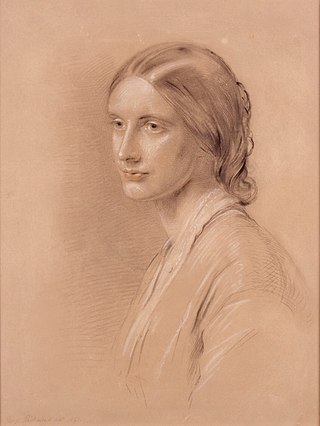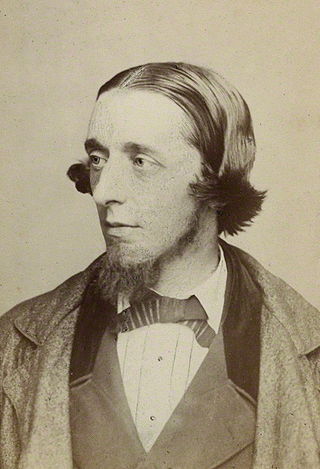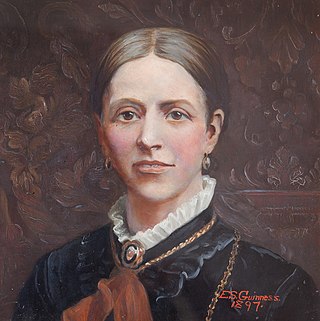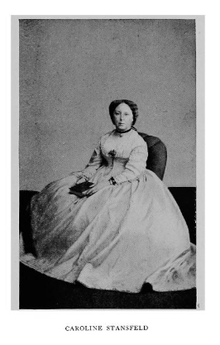
Giuseppe Mazzini was an Italian politician, journalist, and activist for the unification of Italy (Risorgimento) and spearhead of the Italian revolutionary movement. His efforts helped bring about the independent and unified Italy in place of the several separate states, many dominated by foreign powers, that existed until the 19th century. An Italian nationalist in the historical radical tradition and a proponent of a republicanism of social-democratic inspiration, Mazzini helped define the modern European movement for popular democracy in a republican state.

Josephine Elizabeth Butler was an English feminist and social reformer in the Victorian era. She campaigned for women's suffrage, the right of women to better education, the end of coverture in British law, the repeal of the Contagious Diseases Acts, the abolition of child prostitution and an end to human trafficking of young women and children into European prostitution.

William Johnson Fox was an English Unitarian minister, politician, and political orator.

Jessie White Mario was an English writer and philanthropist. She is sometimes referred to as "Hurricane Jessie" in the Italian press.

Sir James Stansfeld, was a British Radical and Liberal politician and social reformer who served as Under-Secretary of State for India (1866), Financial Secretary to the Treasury (1869–71) and President of the Poor Law Board (1871) before being appointed the first President of the Local Government Board.

William Henry Ashurst (1792–1855) was an English solicitor, deeply involved in the radical politics of his time.

The Orsini affair comprised the diplomatic, political and legal consequences of the "Orsini attempt" : the attempt made on 14 January 1858 by Felice Orsini, with other Italian nationalists and backed by English radicals, to assassinate Napoleon III in Paris.

Aubrey House is a large 18th-century detached house with two acres of gardens in the Campden Hill area of Holland Park in west London, W8. It is a private residence.

Clementia Taylor was an English women's rights activist and radical.

Eliza Ashurst Bardonneau was a member of an important family of radical activists in mid-nineteenth-century England and the first translator of George Sand's work into English. The family supported causes ranging from women's suffrage to Italian unification.

Sophia Dobson Collet was a 19th-century English feminist freethinker. She wrote under the pen name Panthea in George Holyoake's Reasoner, wrote for The Spectator and was a friend of the leading feminist Frances Power Cobbe.

Matilda Mary Hays was a 19th-century English writer, journalist and part-time actress. With Eliza Ashurst, Hays translated several of George Sand's works into English. She co-founded the English Woman's Journal. Her love interests included the actress Charlotte Cushman, with whom she had a 10-year relationship, and the poet Adelaide Anne Procter.

The International Abolitionist Federation, founded in Liverpool in 1875, aimed to abolish state regulation of prostitution and fought the international traffic in women in prostitution. It was originally called the British and Continental Federation for the Abolition of Prostitution.

Matilda Ashurst Biggs was a member of the notable 19th-century British family of reformers, the Ashursts. Their circle of radicals was nicknamed the "Muswell Hill Brigade" after the family homestead. Alongside her family, Matilda Biggs promoted progressive domestic and foreign causes, especially working for women's equality in Britain and Italian unification.

Elizabeth Ashurst Biggs was an English novelist and advocate for women's rights and anti-slavery.

Susannah Arethusa Gibson was an English Liberal activist and feminist of the 19th century, who variously supported Giuseppe Mazzini and the unification of Italy, mesmerism and spiritualism, and opposed the Roman Catholic Church until joining it in later life. She was married to Thomas Milner Gibson, a leading campaigner for free trade.

Caroline Ashurst Biggs was an advocate for women’s rights and a third generation member of the Ashurst family of radical activists. Born in Leicester on 23 August 1840, she was the second child of Matilda Ashurst Biggs and Joseph Biggs. She died at 19 Notting Hill Square in London on 4 September 1889. At the World's Columbian Exposition in Chicago in 1893, her photograph was included in an exhibition of Portraits of Eminent British Women, in a section devoted to Pioneers in Philanthropy and General Advancement of Women.

Emilie Ashurst (Hawkes) Venturi was an artist, writer, and activist who pushed for reforms in nineteenth-century Britain. She was the primary English translator of the works of Giuseppe Mazzini, the renowned Italian intellectual, and his devoted disciple. She corresponded with Mazzini, the Italian revolutionary Giuseppe Garibaldi, the artist James McNeill Whistler, the poet Algernon Charles Swinburne, the activist Josephine Butler, and the Irish politician John Dillon. She also painted portraits and published essays, translations, and some fiction. She and her first husband, Sidney Milnes Hawkes (1821-1905), separated in 1854. After her divorce was granted in 1861, she married the Italian patriot Carlo Venturi and became known as Madame Venturi. Their marriage ended with Carlo’s sudden death from a stroke. She also published as E.A.V and Edward Lovel. She belonged to a family, the Ashursts, who agitated for reforms across three generations and were the central figures in the "Muswell Hill Brigade".
Maude Ashurst Biggs born Maude Biggs was a British translator and Polish nationalist.

WilliamShaen was a British radical and lawyer. An active supporter of women's education, he helped to found Bedford College, London.


















